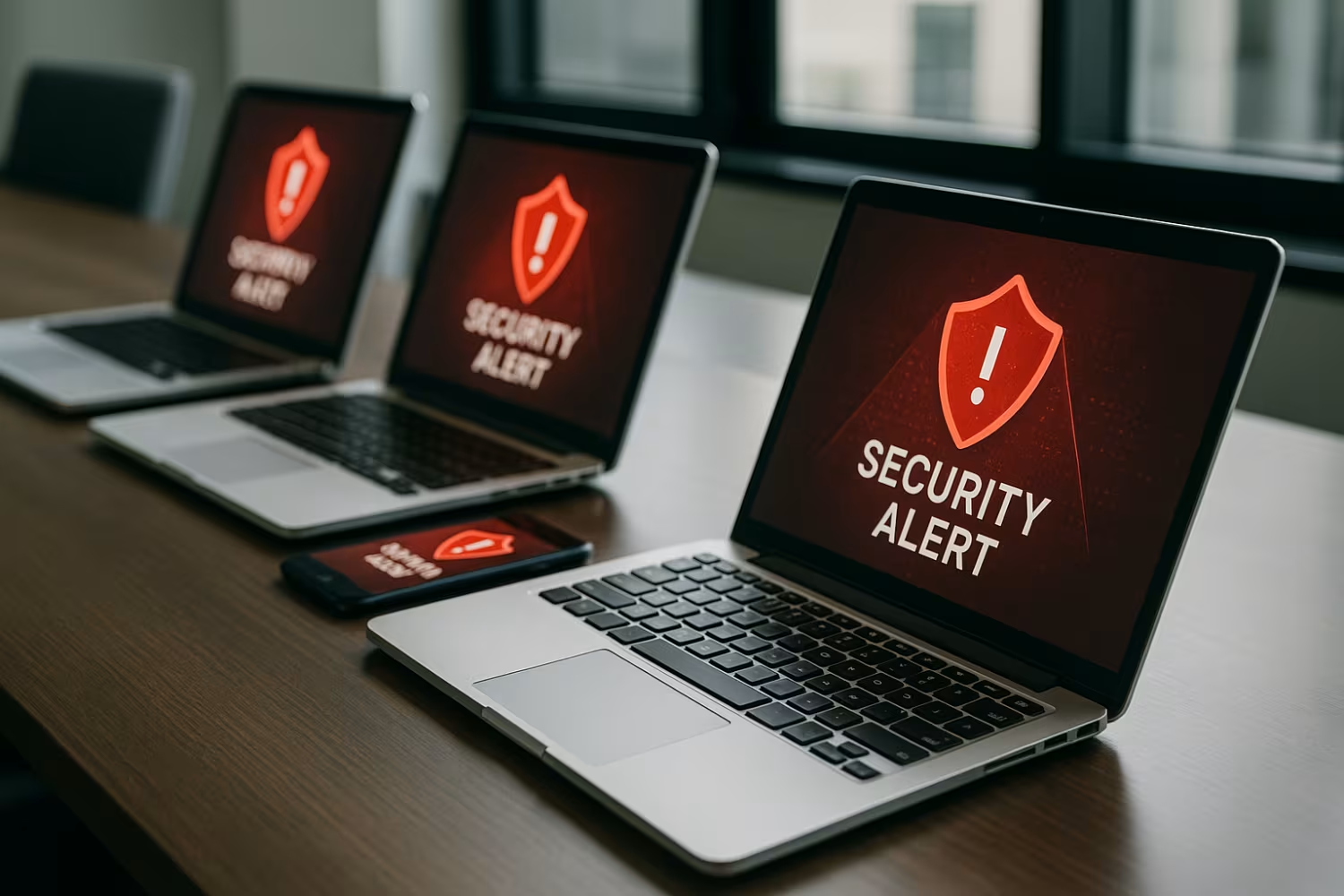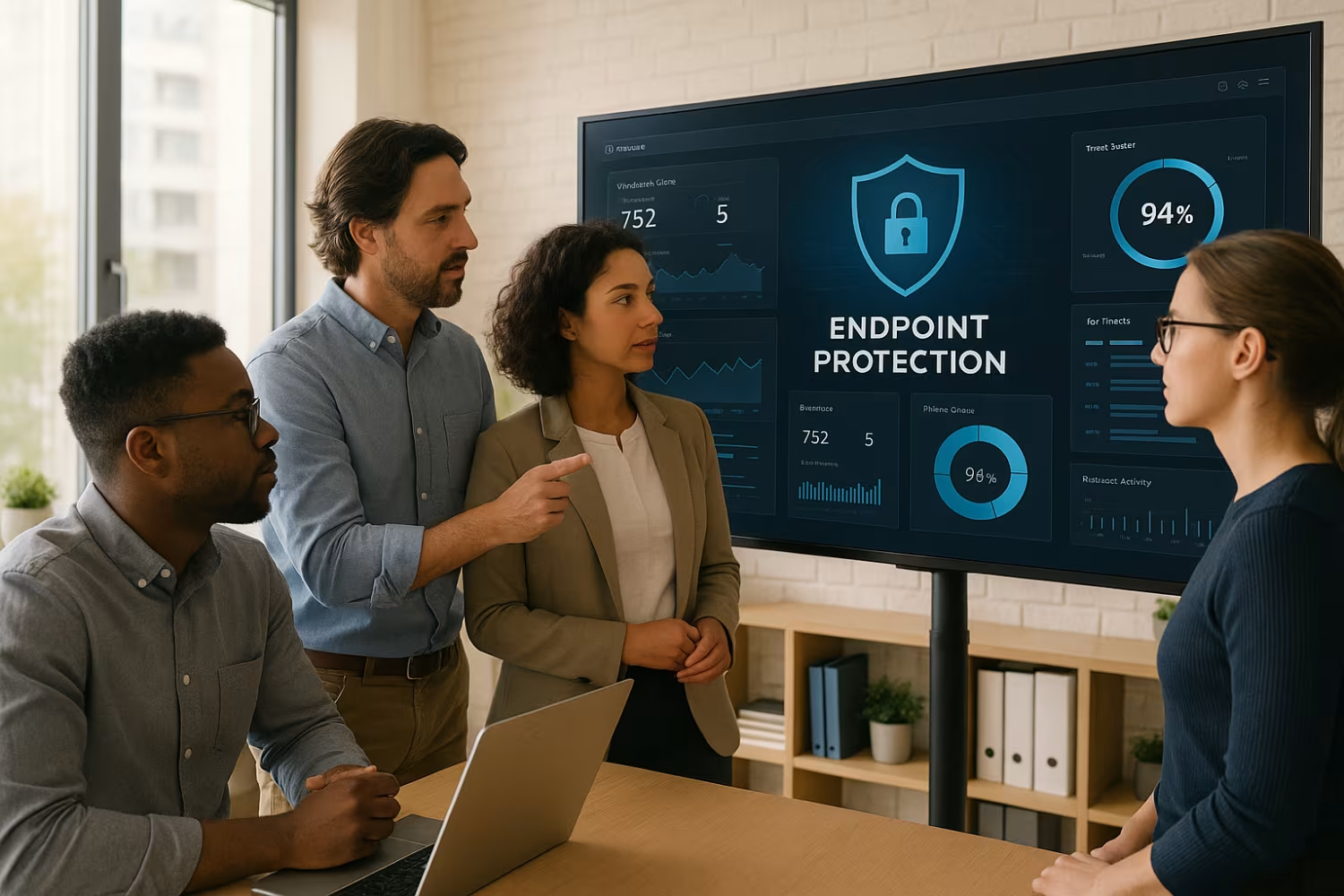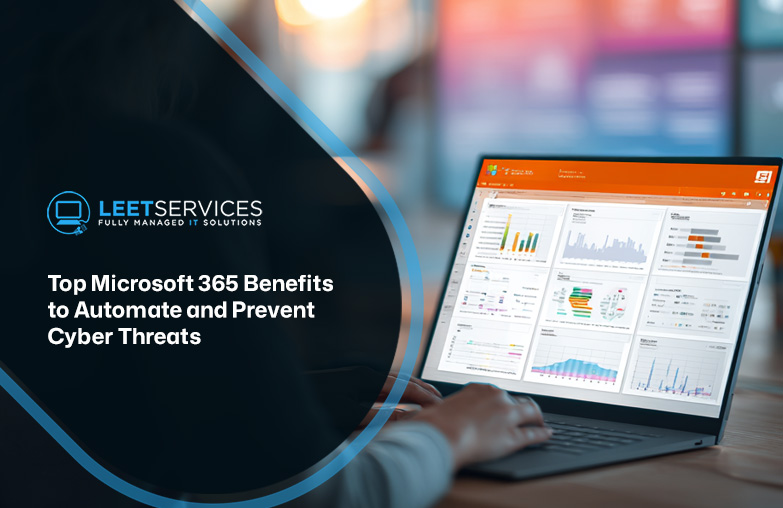What Is Endpoint Security? Key Tools & Protection Platform Tips
Endpoint security is no longer optional for growing businesses. With more employees using mobile devices and remote work becoming the norm, every device connected to your network can be a potential risk. This article explains what endpoint security is, why it matters, and how to choose the right tools to protect your business.
You’ll learn how endpoint protection works, what’s considered an endpoint in cyber security, and how endpoint security software helps prevent data breaches. We’ll also cover the key components of a strong endpoint security solution, common mistakes to avoid, and best practices for implementation. Whether you’re building your first security strategy or upgrading an existing one, this guide will help you make informed decisions.
What is endpoint security?
Endpoint security is the process of protecting devices like laptops, desktops, and smartphones that connect to your business network. These devices, also called endpoints, are often the first targets for cyber threats. A strong endpoint security solution helps monitor, detect, and block malicious activity before it causes harm.
Unlike traditional antivirus, endpoint protection platforms (EPP) offer more advanced features. These include real-time monitoring, threat detection, and centralized management. This makes it easier for your security team to manage multiple devices and respond quickly to incidents. With the rise of remote work and mobile access, endpoint security is more important than ever.
Endpoint security tools are designed to secure each individual device while also integrating with your broader network security strategy. This layered approach helps reduce the risk of data breaches, ransomware, and other attacks.

Key strategies for improving endpoint security
Improving endpoint security starts with understanding where the gaps are. Here are several strategies to help you strengthen your protection platform and reduce risk.
Strategy #1: Identify what is considered an endpoint
Not all devices are obvious. In addition to desktops and laptops, endpoints include smartphones, tablets, printers, and even IoT devices. Knowing what’s considered an endpoint helps you secure every access point.
Strategy #2: Use centralized management tools
Managing each device separately is inefficient. A centralized management console lets you apply updates, monitor threats, and enforce policies across all endpoints from one place.
Strategy #3: Implement endpoint detection and response (EDR)
EDR solutions go beyond basic antivirus software. They monitor behavior, detect suspicious activity, and allow your team to respond quickly to threats. This is crucial for minimizing damage.
Strategy #4: Keep antivirus software up to date
Even with advanced tools, traditional antivirus still plays a role. Make sure it’s updated regularly to catch known threats and prevent common attacks.
Strategy #5: Train employees on security risks
Human error is a major cause of security incidents. Teach your team how to recognize phishing emails, avoid unsafe downloads, and report suspicious activity.
Strategy #6: Segment your corporate network
Separating your network into smaller zones limits the spread of threats. If one endpoint is compromised, segmentation helps contain the damage.
Strategy #7: Monitor remote work devices
Remote work increases risk. Make sure all mobile devices used off-site follow the same security standards as in-office equipment.
Essential features of a strong endpoint protection solution
A reliable endpoint protection solution should include the following features:
- Real-time threat detection and response
- Centralized management for all endpoint devices
- Compatibility with mobile and remote work environments
- Integration with existing network security systems
- Automated updates and patch management
- Reporting tools for visibility and compliance

Understanding the components of endpoint security
A complete endpoint security solution includes several components that work together to protect your business. These include antivirus software, firewalls, intrusion prevention systems, and EDR tools. Each component plays a role in detecting, blocking, and responding to threats.
Endpoint protection platforms often bundle these tools into one system. This makes it easier to manage and ensures consistent protection across all devices. Some solutions also include encryption, application control, and data loss prevention features.
By combining these technologies, you reduce the chance of a single point of failure. This layered defense approach is essential for protecting sensitive data and maintaining business continuity.
Choosing the right endpoint security software for your business
Not all endpoint solutions are created equal. Here are some factors to consider when choosing the right software for your business.
Factor #1: Scalability and performance
Your endpoint security software should grow with your business. Look for solutions that can handle more devices without slowing down performance.
Factor #2: Ease of deployment
Choose software that’s easy to install and configure. Cloud-based options often offer faster setup and lower maintenance.
Factor #3: Integration with existing tools
Your endpoint protection should work with your current IT systems. Check for compatibility with your operating systems, firewalls, and other security tools.
Factor #4: Support and updates
Reliable vendor support and regular updates are critical. Make sure your provider offers timely patches and responsive customer service.
Factor #5: Visibility and reporting
You need to know what’s happening on your network. Look for tools that offer real-time dashboards, alerts, and detailed reports.
Factor #6: Compliance requirements
If you operate in a regulated industry, your endpoint security solution must meet specific standards. Make sure it supports compliance with HIPAA, PCI-DSS, or other frameworks.

How to implement endpoint protection effectively
Start by identifying all devices that connect to your network. This includes desktops, laptops, mobile devices, and any other hardware that could be targeted. Once you know what you’re protecting, install endpoint security software that fits your needs.
Use a centralized management console to apply consistent policies across all endpoints. Set up alerts for unusual behavior and schedule regular scans. Train your employees on safe practices and update your tools frequently. The goal is to create a system that’s easy to manage but hard for attackers to break.
Best practices for maintaining endpoint security
Maintaining endpoint security is an ongoing process. Here are some best practices to follow:
- Regularly update all endpoint security tools
- Monitor endpoints for unusual activity
- Apply security patches as soon as they’re available
- Limit user access based on job roles
- Use multi-factor authentication on all devices
- Review and adjust policies as your business grows
Following these steps helps reduce your exposure to cyber threats and keeps your data safe.

How Leet Services can help with what is endpoint security
Are you a business with 15–80 employees looking for a better way to secure your devices? As your team grows, so do your risks. You need a solution that protects every endpoint without slowing down your operations.
At Leet Services, we help businesses like yours build strong endpoint protection strategies. Our team can guide you through selecting the right tools, setting up centralized management, and training your staff. Contact us today to get started.
Frequently asked questions
What is an endpoint in cyber security and why does it matter?
An endpoint in cyber security is any device that connects to your business network. This includes laptops, desktops, smartphones, and tablets. Each of these devices can be a target for cyber threats.
Securing these endpoints is critical because they often serve as entry points for attackers. Without proper endpoint protection, a single compromised device can lead to a larger data breach or system failure.
What is endpoint security software and how does it work?
Endpoint security software protects individual devices by detecting and blocking threats. It often includes antivirus, firewalls, and behavior monitoring tools.
This software works by scanning for malicious activity and alerting your security team. It also helps enforce policies and manage updates across all endpoint devices.
How does an endpoint protection platform differ from antivirus?
An endpoint protection platform (EPP) offers more than just antivirus. It includes multiple tools like intrusion prevention, data loss protection, and centralized management.
While antivirus software focuses on known threats, EPP solutions detect and respond to new, unknown risks. This makes them more effective for modern businesses.
What are the components of endpoint security I should look for?
Key components include antivirus software, firewalls, encryption, and endpoint detection and response (EDR). These tools work together to protect your network.
You should also look for centralized management features and integration with your existing security technologies. This ensures consistent protection across all devices.
Why is endpoint security important for small businesses?
Small businesses are often targeted because they may lack strong defenses. Endpoint security helps protect sensitive data and maintain operations.
With more employees working remotely, securing each individual device is essential. A strong endpoint security solution reduces the risk of cyber threats.
What are some common endpoint security risks?
Common risks include malware infections, phishing attacks, and unauthorized access. These threats can come from emails, downloads, or compromised websites.
Using advanced endpoint protection and training your team can help reduce these risks. Regular updates and monitoring are also key to staying secure.





.avif)
.avif)
.avif)


